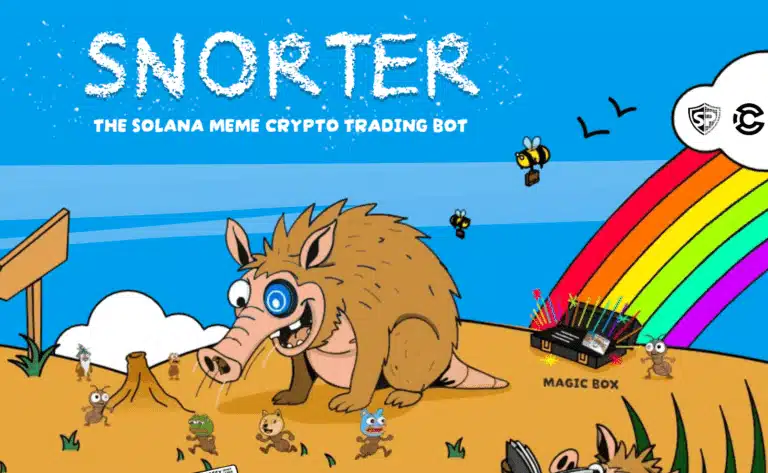Pump.fun’s new decentralised exchange promises smoother trading for Solana meme coins – but as congestion persists, Layer 2 projects like Solaxy could play a longer-term role in supporting network scalability.
Solana’s meme coin boom has been one of the most active narratives in 2024 and early 2025, fuelled by high-speed transactions and low fees. However, this growth has also exposed technical weaknesses.
Network congestion, transaction failures, and inflated gas fees during peak activity remain recurring issues, particularly when multiple tokens launch simultaneously.
In response to some of these pain points, Pump.fun – a popular meme coin creation tool on Solana – launched PumpSwap on March 20.
The new decentralised exchange (DEX) is intended to speed up and streamline meme coin trading by integrating token creation and liquidity directly into one platform.
Built on Solana, PumpSwap uses a constant product automated market maker (AMM) model, similar to Raydium v4 and Uniswap v2. This means it relies on liquidity pools, not order books, to determine token prices, allowing traders to swap tokens instantly as long as liquidity is available.
The original six-SOL migration fee has been scrapped in favour of a 0.25% trading fee, with 0.20% going to liquidity providers and 0.05% to the protocol.
Remember the first time you discovered Uniswap and realized how it would transform Ethereum trading? I'm getting those same vibes with PumpSwap – a new decentralized exchange (DEX) that will shake up the Solana ecosystem and potentially reshape the broader Layer 2 landscape.
What Exactly is PumpSwap?
PumpSwap is a next-generation DEX built on Solana designed to solve the biggest daily pain points traders face. It combines lightning-fast transaction speeds, innovative liquidity mechanisms, and some genuinely game-changing features for meme coin traders.
I first stumbled across PumpSwap while hunting for better meme coin trading options. After countless frustrating experiences with slippage, failed transactions, and liquidity issues on other platforms, finding PumpSwap felt like discovering an oasis in the desert.
The Key Features That Make PumpSwap Different
1. Concentrated Liquidity Pools
Unlike traditional AMMs that spread liquidity across an infinite price range, PumpSwap uses concentrated liquidity pools. This means liquidity providers can focus their assets within specific price ranges where trading happens.
My first trade using one of these pools was eye-opening. The slippage was minimal compared to what I was used to on other Solana DEXs, and my transaction went through instantly.
2. Meme Coin Launchpad
This is where things get interesting for Solana meme coin enthusiasts. PumpSwap's launchpad provides a structured way to launch new meme coins with built-in protections against rug pulls and scams.
Last month, I participated in a meme coin launch through their platform. The difference was night and day compared to the usual wild west experience:
- Transparent tokenomics enforced by smart contracts
- Anti-whale mechanisms preventing large holders from dumping
- Locked liquidity with verifiable timeframes
- Multi-stage launch process with fair distribution
3. Cross-Chain Integration
PumpSwap isn't just focusing on Solana. They're building bridges to Layer 2 solutions like Arbitrum, Optimism, and Base, allowing seamless trading between Solana and Ethereum-based assets without leaving the platform.
I've been testing their beta bridge to Arbitrum, and being able to swap between my Solana meme coins and Arbitrum tokens without using multiple platforms has saved me countless hours and gas fees.
4. Advanced Trading Tools
Let's be honest – most DEXs have terrible trading interfaces. PumpSwap delivers professional-grade tools:
- Real-time charting with multiple timeframes
- Limit orders and stop losses for meme coins (finally!)
- Trading bots you can configure with no coding experience
- Risk management features that prevent you from getting rekt
After struggling with basic interfaces on other platforms, having these tools available makes a world of difference in making informed trading decisions.
Will PumpSwap Change Meme Coin Trading?
Early data suggests interest is high. Within its first week, PumpSwap facilitated more than 14 million token swaps and reached $1.52 billion in total trading volume, according to Dune Analytics. Nearly two-thirds of trades were under $10, highlighting the retail-driven nature of meme coin speculation.
Unlike previous iterations, where newly launched coins had to migrate to other DEXs, PumpSwap enables instant listing and trading upon completing a bonding curve. This could increase liquidity retention within the Pump ecosystem and reduce barriers for creators and traders.
Additionally, PumpSwap supports tokens beyond memes, including assets from Pudgy Penguins, Aptos, Tron, LayerZero, and wrapped tokens like cbBTC and USDe, hinting at broader ambitions within Solana DeFi.
That said, PumpSwap is entering a crowded and competitive space. Raydium, Solana’s leading DEX, responded quickly with the launch of LaunchLab, a similar platform that allows users to launch tokens and set pricing parameters dynamically. While LaunchLab hasn't yet seen the same trading volume, Raydium still holds a 45% share of Solana DEX activity compared to PumpSwap’s 19%.
Other Solana-based exchanges, such as Jupiter and Orca, also remain significant players. Each has unique liquidity-routing strategies and integrations that PumpSwap may struggle to match in the short term.
How PumpSwap Will Impact Solana Meme Coins
Increased Legitimacy and Reduced Scams
Rug pulls and scams have plagued the meme coin space on Solana. With PumpSwap's verification system and launch requirements, we'll likely see a shift toward more legitimate projects.
I've already noticed projects adapting their launch strategies to meet PumpSwap's standards, which is raising the bar across the ecosystem.
Enhanced Liquidity and Reduced Volatility
Meme coins typically suffer from liquidity issues, making them incredibly volatile. PumpSwap's concentrated liquidity model provides deeper markets for trading popular meme coins.
Just last week, I watched a major Solana meme coin announcement that would have commonly caused wild price swings. On PumpSwap, the price movement was much more controlled thanks to the enhanced liquidity, allowing traders to enter and exit positions without the usual panic.
Mainstream Accessibility
Let's face it—buying meme coins has been a technical nightmare for average users. PumpSwap's intuitive interface and fiat on-ramp make it significantly easier for newcomers to participate.
A friend with zero crypto experience managed to buy his first Solana meme coin through PumpSwap in under 10 minutes—something that would have been unthinkable with the previous generation of tools.
The Impact on Layer 2 Ecosystems
Cross-Chain Liquidity
As PumpSwap builds bridges to various Layer 2 networks, liquidity flows between ecosystems increase. This cross-pollination could be a massive catalyst for lesser-known L2 tokens.
I've already noticed arbitrage opportunities emerging between Solana assets and their Layer 2 counterparts, which savvy traders are starting to exploit.
Competition Driving Innovation
PumpSwap's feature set pressures existing Layer 2 DEXs to improve their offerings. We're seeing platforms like SushiSwap and QuickSwap scrambling to match PumpSwap's capabilities.
This competition benefits us as traders – better tools, lower fees, and more innovative platform features.
New Token Launch Dynamics
The success of PumpSwap's launchpad model could reshape how tokens launch across Layer 2 ecosystems. Projects might start prioritizing platforms with similar protective measures.
I'm already seeing discussion in developer communities about adopting similar launch mechanisms on Arbitrum and Optimism, which could lead to healthier token economies overall.
Solana’s Scaling Problem: Why Meme Coin Activity Alone Isn’t Enough
While PumpSwap makes meme coin trading more seamless, it doesn't address the root cause of one of Solana’s most significant challenges: network scalability. As meme coins explode in popularity, they significantly strain Solana’s Layer 1, which has historically struggled during peak demand.
That’s where Layer 2 solutions—designed to take some of the computational load off the base chain—enter the picture. Ethereum’s success with rollups like Arbitrum and Optimism shows the potential: According to L2Beat, Layer 2 protocols now handle over 60% of Ethereum’s total transaction volume.
Solana, however, has lacked a native Layer 2 solution.
Solaxy: A Layer 2 Network to Unclog Solana
Solaxy is positioning itself as Solana’s first Layer 2 scalability solution. Rather than focusing on trading, the protocol aims to tackle systemic congestion issues by executing transactions off-chain and settling them periodically on Solana’s Layer 1.
This off-chain batching model helps reduce gas fees, increases throughput, and improves overall dApp performance. Transaction bundling is a key innovation here: by grouping multiple user actions into a single settlement transaction, Solaxy optimises cost efficiency.
Cross-chain interoperability is also a focus. The Solaxy team is building a bridge to Ethereum using Hyperlane, enabling users to benefit from Solana’s speed and Ethereum’s liquidity. Plans include extending compatibility to Layer 2s like Base.
Solaxy Presale Gains Traction, but Risks Remain
Solaxy’s presale has raised more than $27.3 million, making it one of Solana's most successful token offerings this year. Its native token, $SOLX, is currently priced at $0.00167, and early buyers can earn up to 149% APY through staking.
Tokenomicsdesignatese 25% of the supplyforo staking rewards, 15%foro marketin, and 10% foro exchange liquidity. An additional 30% is earmarked for development and treasury funding.
But challenges remain. Solaxy must compete with entrenched infrastructure providers like Neon EVM, Zeta Markets, and Eclipse, each working on different scaling or interoperability solutions. Solana’s architecture doesn’t natively support rollups like Ethereum's, meaning Layer 2s may face technical integration challenges requiring custom solutions.
PumpSwap and Solaxy Serve Different Purposes
It’s important to note that PumpSwap and Solaxy serve distinct needs within the Solana ecosystem.
PumpSwap is built for short-term trading and liquidity within the meme coin sector. It offers retail traders speed and ease of access but doesn’t scale the chain or reduce systemic risk. For that reason, its success may be limited to the current meme cycle unless deeper functionality or sustainable tokenomics are introduced.
Solaxy, on the other hand, is focused on infrastructure. It may not be as exciting to meme coin traders, but its scalability tools could be essential for long-term growth for developers, institutional users, and DeFi platforms. As Ethereum has shown, Layer 2s are where much of the value migrates once the base layer becomes congested.
Expert Opinions on Scalability vs Hype Cycles
Some industry voices are already weighing in on the divergence between short-term hype and long-term fundamentals. Trader and YouTuber CryptoWire, who previously covered Arbitrum and Blast, commented: “Solaxy has a real chance to own Solana’s Layer 2 narrative if it can deliver on cross-chain promises. That could make $SOLX more than just a meme – it could be a core part of the network.”
Two Sides of Solana’s Future
For investors, PumpSwap may present a substantial near-term opportunity in meme coin trading, particularly for those already active on Pump. Fun. But Solaxy offers a different proposition – potentially becoming the backbone for a more scalable, developer-friendly Solana.
Both projects deserve attention, but understanding their distinct roles is essential. Traders may enjoy PumpSwap’s fast swaps and low fees, while long-term builders and backers might see Solaxy as the more substantial bet for infrastructure growth.
Solana is evolving fast, and these two projects could shape its future differently.
JOIN THE SOLAXY PRESALE BEFORE THE NEXT PRICE INCREASE
Final Thoughts
PumpSwap represents the next evolution in DEX technology, particularly for the underserved meme coin market. As more traders discover its advantages, its impact on both Solana and Layer 2 ecosystems will likely be substantial.
Whether you're a seasoned trader or just getting started with crypto, it's worth exploring PumpSwap's offerings. The platform addresses real pain points that have been holding back the broader adoption of DEXs for speculative trading.
Have you tried PumpSwap yet? I'd love to hear about your experience and how it compares to other platforms you've used. This space is evolving rapidly, and staying ahead of the curve means constantly testing new tools and approaches.
Disclaimer: This article is for informational purposes only and does not constitute investment advice. Always research before investing in cryptocurrencies, and be aware of the risks involved.













